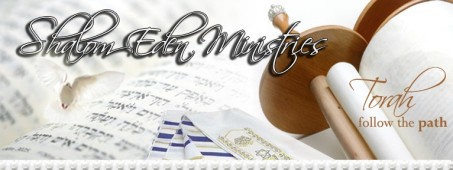 |
Series E -- Godís Laws |
BIBLE STUDY LESSON 21 MOSES DISOBEYS THE DEATH OF MIRIAM AND AARON
Moses took Aaron’s rod and went with Aaron to the rock. They summoned the people to the rock and spoke to them. Listen to me, you rebels! Moses said. Must we bring water from this rock for you? Moses lifted Aaron’s rod in his hand and struck the rock twice. Water poured from the rock, enough for all the people and the cattle to drink. But the Lord scolded Moses and Aaron for the way they had done this. You did not honour Me before the people of Israel, the Lord said. Therefore, you shall not enter the Promised Land with your people. The place where the rock was struck was named Meribah, which meant “Rebel Waters,” for this was the place where Israel rebelled against the Lord. But the Lord showed them His holiness there. While the people camped at Kadesh, Moses sent messengers to the king of Edom. Greetings from the descendants of your brother Israel, the message said. You are aware of all of the problems we have had how our ancestors went to Egypt and stayed for a long time and how the Egyptians made slaves of our people. But when we pleaded with the Lord, He sent His Angel to lead us from Egypt. Now we are camped here at Kadesh, not far from the border of your land. Let us pass through your land. We will not go across a field or vineyard, nor will we drink water from any of your wells. We will stay on the king’s highway until we have passed through your land. No, you may not pass through our land, the king replied. If you do, we will come out and fight you. But we will stay on the king’s highway, Israel insisted. If we drink any of your water, we will pay for it. We only want to pass through your land. The king of Edom answered by sending an army to the border. So when Israel saw that the king would not let them pass through Edom, they turned away from Kadesh and went to Mount Hor, which was near the border of Edom. While they camped near Mount Hor, the Lord spoke to Moses and Aaron. Aaron will soon die, for he will not enter the Promised Land with his people since the two of you rebelled against Me at the waters of Meribah, the Lord said. Take Aaron with his son Eleazar into Mount Hor. Take Aaron’s garments from him and put them on Eleazar. Then Aaron will die in the mountain. Moses did as the Lord commanded and the three of them went up into Mount Hor, while all the people of Israel watched them. Moses took Aaron’s garments from him and put them on his son Eleazar. There, in the top of Mount Hor, Aaron died. Then Moses and Eleazar came down. When the people learned that Aaron was dead, they mourned for him for thirty days. COMMENTS “GATHERED TO ONE’S FATHERS”: BURIAL CUSTOMS The body might be wrapped in its cloak or an animal skin. Later on in Canaan, families who could afford it buried their members in caves. That is how Abraham, Sarah, Isaac, Rebekah, Jacob and Leah were buried. Others carved tombs in limestone hillsides or beneath hills. As time went on, rooms ringed with burial slots were added, leading in a semicircle back to the first room. As new bodies were buried in the tombs, the bones of the old skeletons were gathered and stored in special stone or pottery jars or boxes called “ossuaries.” These were shaped like chests or houses and were engraved with inscriptions. Sometimes however, the old bones were simply shoved aside to make room for the new body. After several burials, someone entered the tomb to gather each person’s bones for the ossuaries. But sometimes one person’s bones would be mistakenly gathered up and put in an ossuary with another’s, perhaps those of a parent or grandparent. Being “gathered to one’s fathers” in this way was considered an honour, because it symbolized the gathering with one’s ancestors beyond the grave. TEST YOURSELF 1.) Where were the Israelites camped when Miriam died? 2.) What did God tell Moses to do to the rock to bring forth water from it? 3.) What did Moses actually do? 4.) Whom did Moses sent messengers to while the Israelites were encamped at Kadesh? 5.) What reply came back from that person? 6.) Where did Aaron die? 7.) Who succeeded Aaron as the high priest? 8.) How long was the required mourning period for Israelite deaths? 9.) What was contained in an ossuary?
|